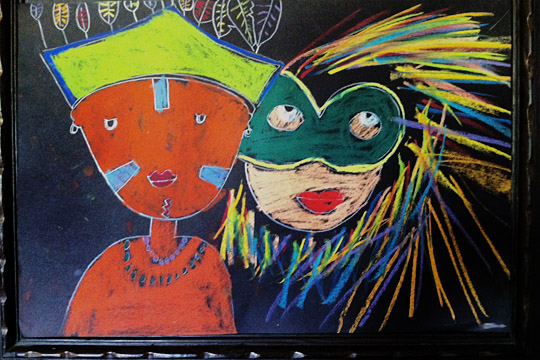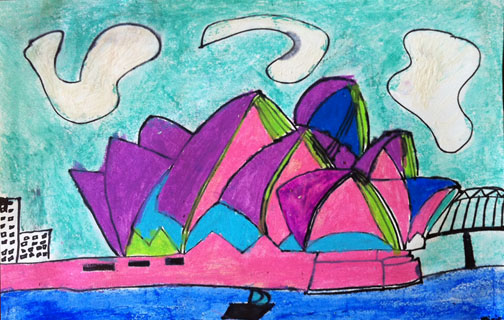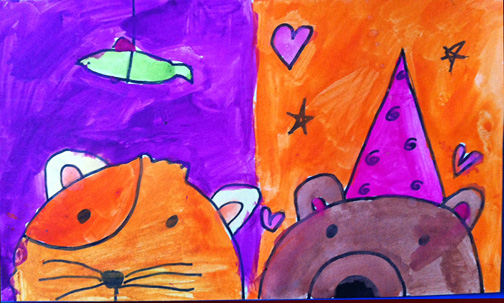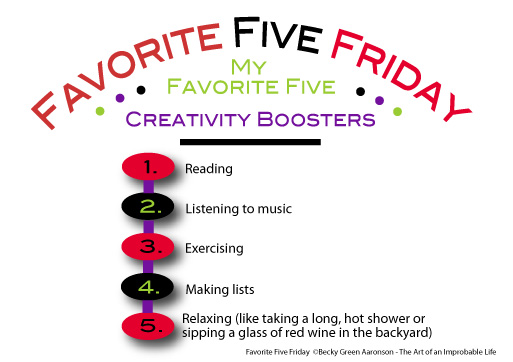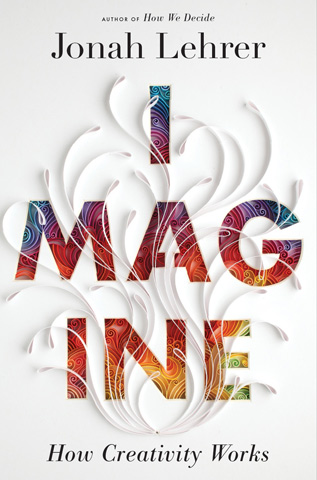 The other night I had the privilege of listening to author, Jonah Lehrer, speak about his best-selling book, Imagine: How Creativity Works.
The other night I had the privilege of listening to author, Jonah Lehrer, speak about his best-selling book, Imagine: How Creativity Works.
When 31-year old Rhodes Scholar and Wired editor, Lehrer, sauntered onto the stage at UCSB, smiled through his urban-hip geeky glasses, then started spewing insights in his highly-caffeinated manner, I felt like I’d just been hit with a double-espresso shot of inspiration.
Lehrer’s talk flowed just like his book, mixing neuroscience and entertaining anecdotes about famous creative breakthroughs and aha moments.
He shared stories about a wide range of characters—everyone from poets, musicians, and advertising executives to inventors, scientists and educators, deconstructing the process of how we accomplish some of our greatest feats of creativity.
 While Imagine has been blasted in several reviews for scientific inaccuracies (The Guardian and The New York Times, in particular), I find this book irresistible.
While Imagine has been blasted in several reviews for scientific inaccuracies (The Guardian and The New York Times, in particular), I find this book irresistible.
None of the information on its own is necessarily groundbreaking, but the way in which Lehrer presents it with his fine writing, connecting the creative dots, and making the science approachable for non-scientific readers, creates a book that is not only delightful, but enlightening.
I knew Imagine was for me when the author kicked off the first chapter describing the genesis of one of Bob Dylan’s best-known songs, Like a Rolling Stone. Dylan, who was burned out at the time—sick of his music and sick of other people’s expectations of him—got on his Triumph motorcycle sans guitar and headed to an empty house in Woodstock. There, after essentially quitting and letting it all go, he ended up creating one of the most inspired pieces of his musical career.
Lehrer hands us one entertaining anecdote after another then peppers it with science, explaining why a particular breakthrough may have occurred. There’s the tale of how masking tape was invented and other common items like Post-it Notes and the Swiffer mop, then there’s the story of how Nike’s famous “Just Do It” logo was created.
“Every creative journey begins with a problem,” he explains. “It starts with a feeling of frustration, the dull ache of not being able to find the answer. We have worked hard, but we’ve hit the wall. We have no idea what to do next…Thanks to how we’re hardwired, it’s often only at this point, after we’ve stopped searching for the answer, that the answer arrives.”
Haven’t we all experienced this in our creative lives? Just when we’ve nearly thrown in the towel, some nugget of inspiration has fallen into our laps and given us the spark we needed to keep going.
What I like about this book is that Lehrer challenges pre-conceived notions about creativity and tries to demystify the process. He believes we all have the ability to be creative if we cultivate certain thought processes, and if we apply a large dose of grit.
As a writer, I loved being reminded about the grit factor, the need to dig deep and be persistent, putting in hours of hard work—as in the “1 percent inspiration, 99 percent perspiration” notion. Best-selling memoirs don’t just magically happen. They take months, sometimes years of writing and re-writing.
Lehrer quotes neuroscientist, Nancy Andreasen, who says,
“Successful writers are like prizefighters who keep on getting hit but won’t go down. They’ll stick with it until it’s right.”
He also quotes famous graphic designer, Milton Glaser, who has the slogan ART IS WORK chiseled in the glass of his studio:
“There’s no such thing as a creative type. As if creative people can just show up and make stuff up. As if it were that easy. I think people need to be reminded that creativity is a verb, a very time-consuming verb.”
My timing in reading this book has been fascinating, as so many of the ideas have infolded in front of me while watching my husband agonize over the creation of an extremely complex piece of art he’s been working on for the past six months. Each part of the design, each medium he’s used (photography, paint, gouache, collage, paper, metal, ink, pencil), and each decision he’s made has been one of intense thought, piles of research, hours of learning new techniques, and even more hours of being hunched over his art table doing the work. Throughout this process he has hit the wall numerous times, felt like he’s lost his mind in even attempting to construct this concept. But just as it’s driving him mad, a solution comes—in the middle of the night, when he’s walking, when he’s listening to NPR, when he’s chatting with colleagues about random subjects, or when he’s looking at other’s art.
While Imagine isn’t a prescriptive book about how to be more creative, Lehrer does offer a few strategies about remaining creative over time:
- Travel—the longer the trip, the better.
- Embrace your status as an outsider. People who aren’t established and haven’t learned the system, often bring the freshest ideas. They don’t know anything so they aren’t afraid to make mistakes. Their “ignorance” or naïveté, gives them an advantage.
- Do the hard work then play, and then do it again, until the two are one process.
- Cultivate new colleagues.
- Embark on a new career or learn a new medium.
- Live in a city. Urban centers are hubs of creativity because populations are usually diverse and people continually rub shoulders, sharing ideas. Culture, he says, determines creative output, and it’s through sharing information and making connections that we maximize that output.
A few other fun tidbits culled from this book include: the color blue is said to increase creativity, as does caffeine, daydreaming, and relaxing. That must be why I do some of my best thinking in the backyard, sipping iced lattes while writing under blue skies; and why ideas always pop into my head while I’m relaxing in a long, hot shower or going on a delicious, meandering run. It’s all about the dopamine, baby!
The take-away message from this multifaceted book is that creativity is hard-wired in the human brain and we can enrich that quality in ourselves and in our society. “It’s time to create the kind of culture that won’t hold us back,” Lehrer says, “We have to make it easy to become a genius.”
If you’re looking for a book to inspire and stir your imagination, by all means read Imagine, especially if you love a good behind-the-scenes story about how things are created, and how some of our best creations have come from failures. If you’re searching for precise scientific data about how our creative minds work, this book might frustrate you with its reported errors and generalizations. Head to scientific journals instead.
I rate this book a solid 4.5 out of 5 stars.
What are your thoughts about this book? And what are your thoughts about Lehrer’s recent “self-plagiarism” controversy? Drop your two cents into the comment box. I’d love to know what you think.
©Becky Green Aaronson 2012

